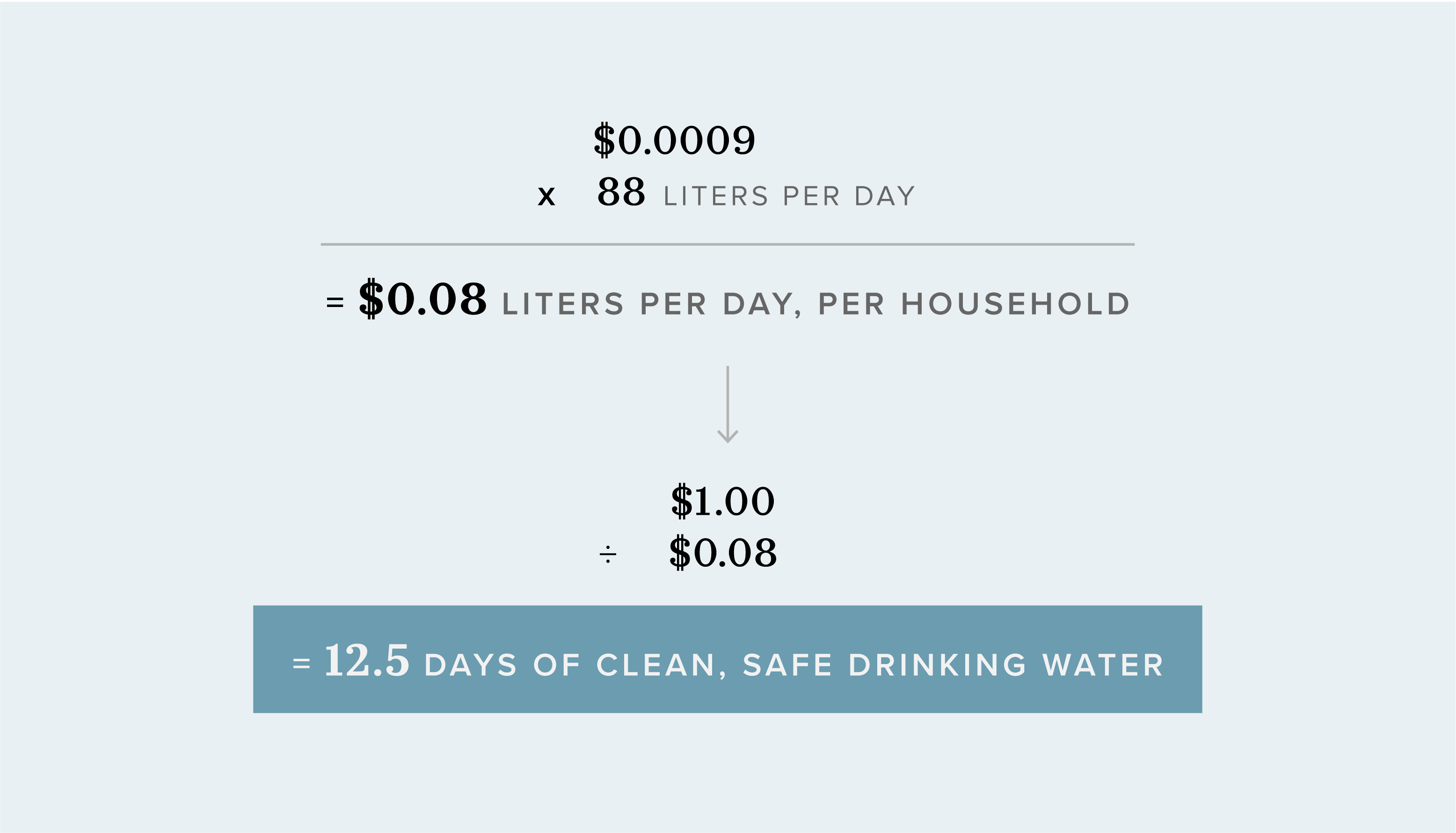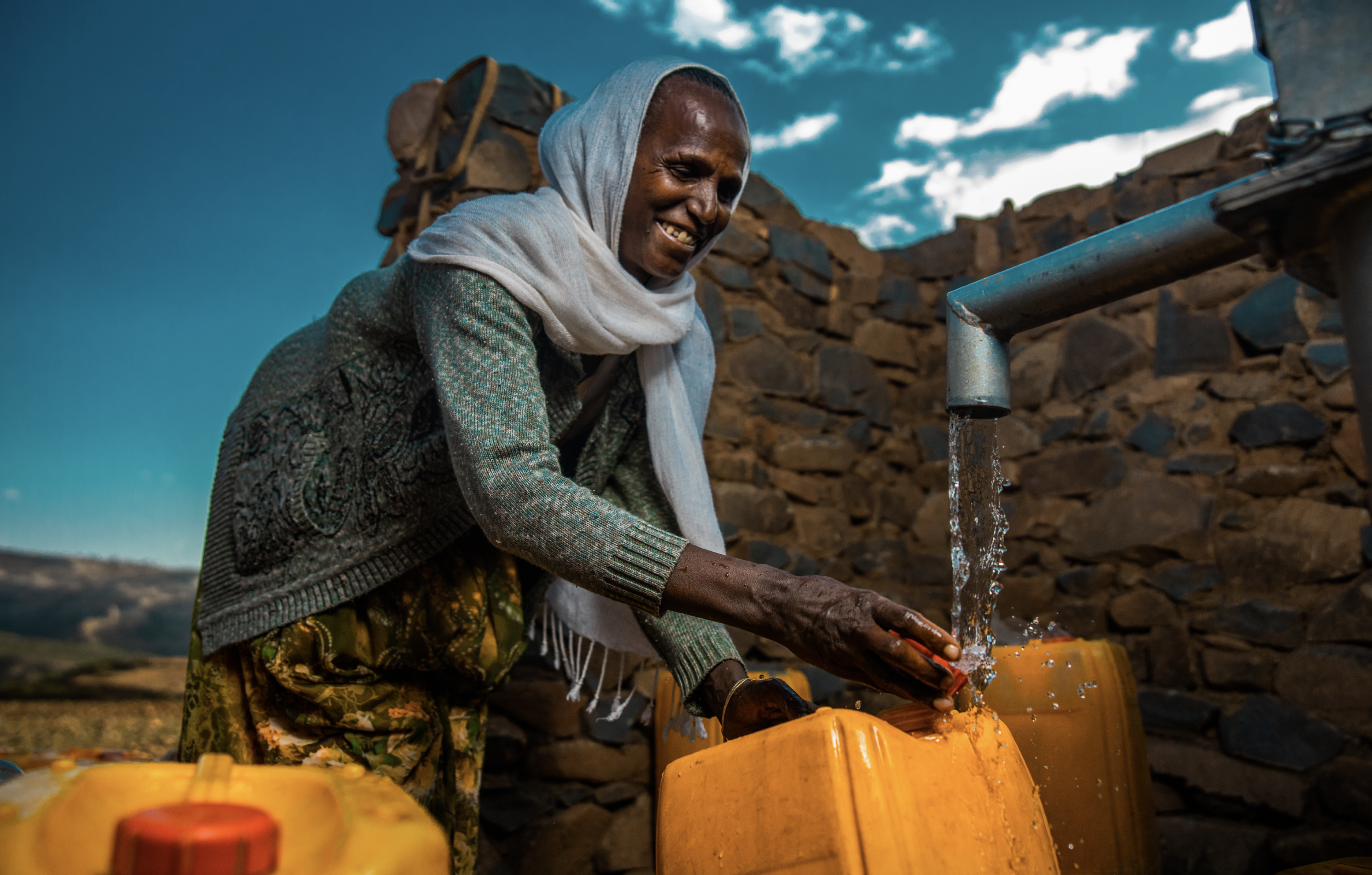At charity: water, we’ve long had an obsession with data.
It’s how we proved our projects (78,350 funded and counting!) and rallied over one million supporters to give to clean water. It’s also why we have an immediate answer for people who wonder, “How much water will my donation provide?”
First, you need to know that 100% of every public donation goes toward clean water. That means on average, every dollar donated pays for 1,100 liters of clean water at a handpump. That’s enough water to supply one family for 12.5 days.
We could, of course, leave it at that. But no data-loving organization walks away without showing their work. Let’s get technical.
First, you need to know that we collect data in two ways:
- We work with our local partners to form evaluation teams. These teams visit and survey communities that have received a water point. Ideally, the evaluations will take place every year for up to 10 years.
- We also use remote sensors to track the water flow of select handpumps.
By combining these two data sets, we can calculate the amount of water collected at each water point and the number of people benefiting from it. But we won’t linger in the hypotheticals. Here’s a real-life example:
Over the course of five years (2015-2019), we funded 7,855 new wells with handpumps. After adding up the “all-in” costs for each project—meaning the total cost of drilling, construction, and all community work—we calculated the average price per project.
During those five years, the average cost of a water project was $10,524.
Now we needed to know how much water was being pumped per day. For that number, we turned to our remote sensors. Every day, every hour they tracked (and continue to track) the number of liters flowing through a water point and sent us reports like the one below.

You might notice a few patterns. For example, most people don’t collect water at night—that’s when you see the report drop to zero. You’ll also notice that some water points were busier than others; compare the green line to the red line. By analyzing these reports, we were able to find the average number of liters pumped every day.
Our data shows that the average handpump produced 6,633 liters of water per day.
With that data, we were ready to calculate the dollar-to-water conversion rate. We started by multiplying the number of liters pumped per day by the duration of use.

Next, to find the cost per liter, we divided the price of the handpump by the number of liters produced.

Thanks to the 47,743 household surveys conducted by evaluation teams, we also knew that there were 5.9 people in the average household. Each of those people used approximately 15 liters per day.


Baseline represents the amount of water collected before a project is built, and endline represents the amount of water collected after a project is built. On average, daily water consumption increases by approximately 1.7 liters after a charity: water project is completed.

This graph shows family size across the 25 regions surveyed.
That led us to our final calculations: we took the price per liter ($0.0009) and multiplied it by the number of liters used per day, per household (88 liters), revealing that water costs $0.08 per day, per household. We then divided $1 by $0.08 to find that just $1 would pay for 12.5 days of clean and safe drinking water—incredible!

Of course, these are simply statistics, and reality often introduces new variables. Still, an average of 12.5 days of clean water for just $1 is a great return on investment. And the impact doesn’t stop there. Some of the most important benefits can’t be measured—like the sense of hope and joy and safety that comes with access to clean water.
Donations like yours support all of these things—the measurable and the unmeasurable—down to the very last dollar. So no matter what you can give, thank you. You’re helping us end the water crisis one generous gift at a time.

